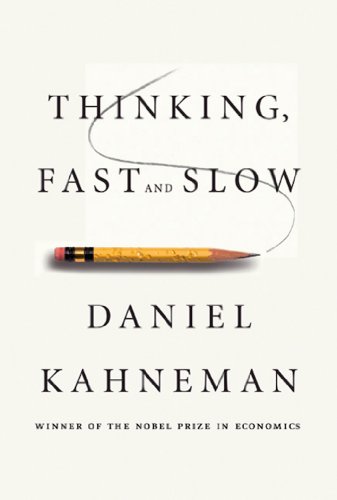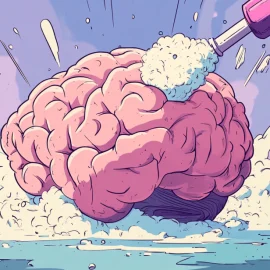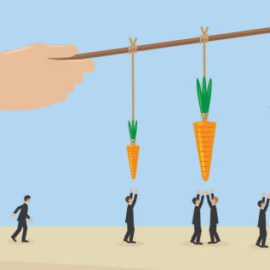

This article is an excerpt from the Shortform summary of "Thinking, Fast and Slow" by Daniel Kahneman. Shortform has the world's best summaries of books you should be reading.
Like this article? Sign up for a free trial here .
What is the meaning of “priming” in psychology? How does priming work? When is it useful? Why is it controversial?
Priming is a technique based on the theory that when an idea is triggered, its associations can cause you to behave in a meaningfully different way without your consciously realizing it. The concept of priming takes the idea of association beyond mere thought, to the functional level.
We’ll cover what priming is, how it’s used, and why it’s controversial.
Priming Meaning and Associations
(Shortform warning: this post is based on a chapter of Daniel Kahneman’s Thinking, Fast and Slow that cites the highly controversial literature on priming, which has failed to replicate in follow-up studies and has been accused of p-hacking or publishing only positive results. Kahneman admitted: “I placed too much faith in underpowered studies…The experimental evidence for the ideas I presented in that chapter was significantly weaker than I believed when I wrote it.” And the “size of behavioral priming effects…cannot be as large and as robust as my chapter suggested.”)
The concept of priming took association beyond mere thought, to the functional level of ideomotor activation. When an idea is triggered, its associations can cause you to behave in a meaningfully different way without your consciously realizing it.
Priming Examples from research studies include:
- People who were primed with money (by images or words) acted more selfishly and independently in group activities.
- Voters who submitted ballots at a school location were more likely to vote in favor of educational propositions.
- People who were primed with words related to the elderly (“Florida, forgetful, wrinkle”) walked more slowly.
- A cafeteria had a “by your honor” collection jar for shared milk. An image that showed human eyes looking at the person gathered more donations than pictures of flowers.
In the reverse direction, behaving in a certain way can trigger ideas and emotions:
- People were instructed to listen to messages through headphones and were instructed to move their heads to check for distortions of sound. Those instructed to nod up and down were more likely to agree with the messages than those shaking heads side to side.
- People who were instructed to think of a shameful thought were more likely to complete the word SO_P as SOAP rather than SOUP. The thesis: feeling morally dirty triggers the desire to cleanse: the “Lady Macbeth Effect.”
The implications of the meaning of priming in psychology are profound – if we are surrounded every day by deliberately constructed images, how can that not affect our behavior?
- Being surrounded by images of money and consumption make us more selfish.
- Seeing images of filial respect makes us nicer to our parents.
- Seeing propaganda of an autocratic leader makes you feel watched and reduces spontaneous thought and independent action.
And likewise, if we are required to behave in a certain way (in a workplace, in a social community, as citizens), does that not affect our cognition and beliefs? This is why the technique of priming is psychology is powerful.
The effects of priming may not be huge – being surrounded by images of money doesn’t make you violate the law or put yourself in physical harm to get money. But a few percentage points by swinging marginal voters can make a difference in elections.
(Shortform warning: Many of the studies cited were later found to have insufficient power, such that either the studies were being p-hacked, or only cherry-picked positive results were being published. It appears the field was too eager to jump on evidence that fit their view of the world. Note the irony about being biased about biases. When priming studies came out, the field of psychology/behavioral economics had just undergone a paradigm change of humans being subject to systematic biases. The field hungered for confirming evidence itself, becoming too ready to accept a neat story (priming) without employing its System 2 thinking to question whether the evidence was valid! Kahneman notes that he’s still a believer in the idea of priming, “There is adequate evidence for all the building blocks: semantic priming, significant processing of stimuli that are not consciously perceived, and ideo-motor activation….I am still attached to every study that I cited, and have not unbelieved them, to use Daniel Gilbert’s phrase.”)
———End of Preview———

Like what you just read? Read the rest of the world's best summary of "Thinking, Fast and Slow" at Shortform . Learn the book's critical concepts in 20 minutes or less .
Here's what you'll find in our full Thinking, Fast and Slow summary :
- Why we get easily fooled when we're stressed and preoccupied
- Why we tend to overestimate the likelihood of good things happening (like the lottery)
- How to protect yourself from making bad decisions and from scam artists






